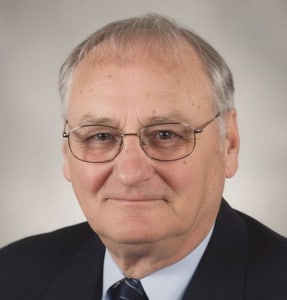The University of Minnesota Crookston preliminary enrollment on the first day of spring semester is 1,704 students, with 709 on-campus, down from 1,834 in the fall with, 803 on-campus. Very early projections are estimating Fall 2019 enrollment at 1841, with an on-campus enrollment of 750 students, continuing a trend of declining on-campus enrollment since the Fall of 2012, which means less revenue with fewer full-time students and fewer students living on campus. “We have our preliminary numbers for spring 2019, and there is some good news and some questions we seem to have in the data. Our online numbers continue to grow modestly, so that’s good news,” said Vice Chancellor for Academic and Student Affairs, John Hoffman. “One of our key indicators is students going from their first to the second year, and our numbers are on par there, but we had some drops we weren’t expecting in new transfer and a couple of other groups, and we’re looking into that and where our final numbers will land.”
However, the administration at UMC is optimistic that changes being made to revamp the admissions department with a more strategic enrollment management model will eventually return first-year cohorts to the 250 or more range UMC was achieving earlier this decade. “A way to think about this in this region is a number of our farmers engage in precision ag, meaning they do different things in different parts of the field. I’m not going to pretend to be an expert in that area, but they can find some very precise ways of changing what they do to increase their yield, and that is what we are now trying to do with our admissions efforts,” said Hoffman. “We are trying to use more data to make precise interventions in the things we do to increase our yields ranging from where our counselors spend their time with students, to how we award financial aid, to the student data we collect to predict who will be successful at the University.”
Change to the enrollment strategy won’t be recognized overnight, as there is a lag time for enrollment changes says, Hoffman. “One of the things that we know with the efforts we are doing is there are lag effects, so efforts we put in place to recruit a class in fall 2018, we won’t see the results of that regarding incoming numbers until fall of 2019,” said Hoffman. “One of the things we’ve been talking about is the best way to start growing our enrollment is to do a better job of retaining our students from one year to the next. Instead of asking where am I going to go to college, we want prospective students to ask the question where am I going to graduate from college. It will take a couple of years, and I think we’re anticipating in fall 2020 we start to see some noticeable changes in those numbers building on what we’re doing this year along with the reality we’ll have a healthy graduating class this year.”
For those familiar with the UMC admissions process with an older child, Hoffman says there should be some recognizable differences in the process today. “Among the changes that an applicant today would see is greater responsiveness to the student after they have applied and after they have been admitted. When I decided where I wanted to go to college most of my decision was made as I applied and perhaps before I was admitted, today students often apply to a number of schools, find out which schools they are admitted to and then get serious making the decision about where they are going,” said Hoffman. “When we look at the spring and summer, we’re creating a number of golden admit days on campus where we invite the students to campus and engage them in conversations about what it would look like to be a student here and what we do to ensure our students are successful. We’re also trying to change up some of the time our admission counselors spend so we’re giving more personalized attention after they have been admitted and engage in the difficult decision about where they are going to graduate from campus.”
UMC SPRING ENROLLMENT DOWN, PLANS IN PLACE TO BOOST FUTURE ENROLLMENT




